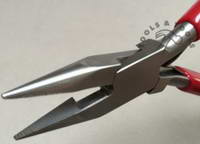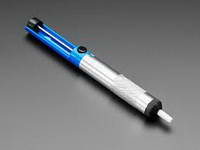The following basic tools are recommended for constructing most electronic kits:
Small flat-bladed screwdriver |
|
A 3mm flat bladed screwdriver will be fine for most small-scale work. |
Small cross-head screwdriver |
|
A Number 0 Phillips screwdriver is recommended.
Note that Phillips and Pozidrive are different and you should use the relevant screwdriver for each screw type.
|
Small side-cutters |
|
You can get side cutters with either a flat cut or a recessed cut as shown here. |
Small snipe-nose pliers |
|
|
Small pilers with serrated teeth grips |
|
|
Temperature-controlled soldering iron |
|
The iron should be, typically, between10 and 30 watts.
There are a wide variety of tip shapes but a small chisel style (around 1.2mm tip) should suit most applications.
|
Solder sucker |
|
Hopefully you don’t need to rework a board but if you do then a solder sucker is useful for clearing out pad holes after removal of a component.
Solder wick is also a lower-cost option.
|
In addition, for testing and calibration you will need one or more of these items:
- Multimeter: should be capable of reading voltage, current (typically no more than 500mA) and resistance. A continuity or diode test function is also useful
- Oscilloscope: a general-purpose model is fine for most work required here
- Frequency-counter: for most work here the oscilloscope in (2) is usually adequate for measuring frequencies
- Crimp Tool: some projects use MTA terminals for external wiring. Crimping for these connectors should, ideally, be made using a proper crimp tool
|








